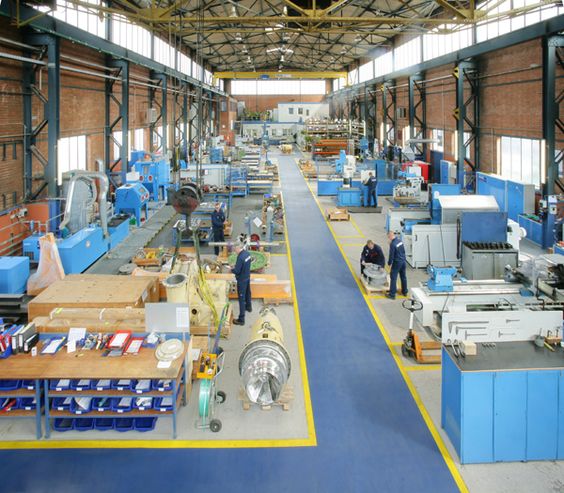“You start with a shiny factory and then you pay people to make it dirty!” It may sound funny and crazy but this is what happens to many factories. And then it goes further like “Why clean if it will get dirty again?” or “We have tried it before!” or even “It is not my job!”, “Why ...
...do I need to spend time in cleaning?” etc.
What is the reason of dirt?
The main reason that makes a factory dirty are the leaks – in other words losses – of product, lubricants, water,  steam, dust, chemicals … you name it. Any type of loss is a waste of material and energy; it may further create corrosion and forced deterioration to the equipment, which results in increased downtime, loss of working hours and eventually cancellation of dispatch orders. Last but not least, leaks can overly increase risks such as fire, explosions and human or environmental accidents.
steam, dust, chemicals … you name it. Any type of loss is a waste of material and energy; it may further create corrosion and forced deterioration to the equipment, which results in increased downtime, loss of working hours and eventually cancellation of dispatch orders. Last but not least, leaks can overly increase risks such as fire, explosions and human or environmental accidents.
It is worth mentioning that dust, moisture and chemicals are the three basic factors that increase the downtime.
A genuine lean factory cannot tolerate leaks. Elimination of leaks is a basic requirement to achieve uninterrupted flow of production and implementation of pull mode in planning and scheduling on a lean production line. Leaks demonstrate poor operating and maintenance procedures and if not remedied, damages and failures will be further proliferated. Mind that dust, moisture and chemicals are the three basic factors that create failures. Failures can generate out – of – spec products that can either cause reprocessing and production time losses or ask for rescheduling and cause delays in the delivery of the finished goods.
Further effects of cleanliness
However cleanliness goes a lot further than that. A clean working environment boosts the morale of the people working in it. Everybody, indeed, is happy to work in a clean place. Besides, operators and maintenance crew are greatly facilitated in their job. Maintaining a clean working place shows respect to others and to the employees themselves. We don’t maintain a clean factory because we are obsessed with cleanliness but because we are professionals in what we are doing. Cleanliness shows clear ownership of the employees on their equipment. In the end “A clean plant can be made better, a dirty plant can never be made good”.
Imagine of a clean factory. This is a place where it doesn’t take any time to clean, simply because it is clean! How can we make this happen?
Cleanliness is a culture
The clean factory requires a specific mind-set. Management should institute proper maintenance routines that do not tolerate malfunctioning equipment. They should also empower the employees providing them with the proper tools and training, to ensure high quality job in maintenance and operation. Management should undertake initiatives to continuously improve the cleanliness throughout the factory. Shop-floor personnel should not only implement standard procedures with discipline but also propose opportunities for improvement in case of abnormalities in the operation of the equipment or the execution of procedures or the quality of materials that beside other losses they contribute to the dirt shop floor.
Cleanliness is also a process
It is important that dirt should not be allowed to accumulate anywhere in the plant. Cleanliness should be integrated in any ordinary operational and maintenance procedure. A good start is to launch a “Clean factory” initiative that should embrace both management and shop floor. Clean – As – You – Go (CAYG) is a relevant sound and structured process, which requires that every job routine is organised in a way that includes the necessary cleaning steps in its execution. Elimination of leaks that greatly facilitates cleanliness are expedited by the implementation of CAYG.
Cleaning for the sake of cleaning is counter – productive and incurs costs. In this respect cleaning is a non – value – adding process. Nevertheless, cleaning is effective if it is organised in a structured way. Factory areas should be classified according to their cleaning level requirements. The cleaning levels should be determined by the product, the operating and the maintenance requirements. The Clean – As – You – Go methodology should be used to institute procedures that ensure the maintenance of the prescribed cleaning level and a lean factory has to keep this discipline.
7/2/2017
Alkis Charalambopoulos, www.leansolutions.gr
Keywords: Lean factory, waste, leak, downtime, cleanliness, flow, pool, clean-as-you-go, maintenance, risk.

